Table of Contents
Understanding Challenging Breeds
When it comes to obedience training, several dog breeds provide particular difficulties. Frequently, these difficulties result from characteristics carefully selected through generations for certain uses. Some breeds, like the Afghan Hound and the Siberian Husky, have a strong sense of independence because of their past as working dogs that had to make decisions on their own in the field. Similarly, terrier breeds developed for hunting, such as the Bull Terrier and the Jack Russell Terrier, were bred with a stubborn nature that might occasionally manifest itself during training.
In addition, high-energy breeds like Australian Shepherds and Border Collies need cerebral and physical stimulation to keep them interested in training activities. In training sessions, these breeds may become easily diverted or frustrated if they don’t have appropriate outlets for their energy.
Strong prey-driven dogs, such as Basenjis and Greyhounds, can also be prone to chasing small animals or objects, making it difficult for them to focus during training exercises, particularly in surroundings with many distractions.
Comprehending these traits unique to a particular breed is essential to customizing training regimens to meet the individual demands of every dog. Working with hard breeds requires patience, persistence, and positive reinforcement approaches to achieve training goals and foster a solid relationship between owner and dog.
Breeds That Present Challenges
1. Siberian Husky (hardest dogs to train)
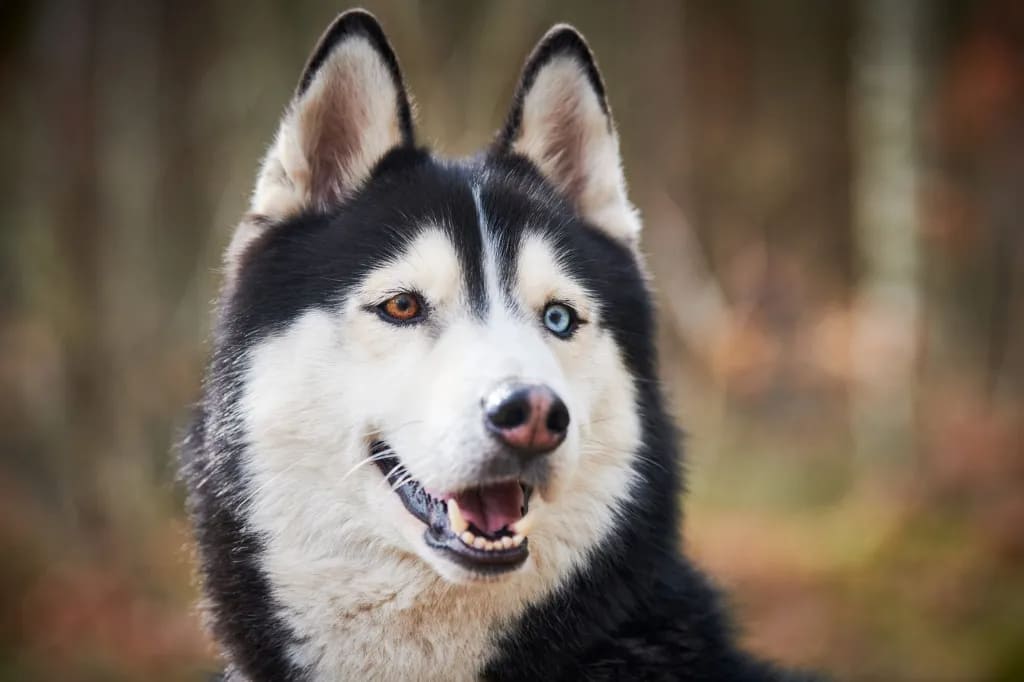
Siberian Huskies present special training challenges because of their beauty and endearing nature. these siberian huskies are one from the hardest dogs to train. They are distinct from other breeds due to their independent spirit and strong will. Because they were historically bred as sled dogs, Siberian Huskies are used to making decisions while exploring wide, icy environments. This independence may manifest as resistance to following instructions, mainly if they sense something more alluring in their environment.
Training sessions may also be challenging because of their natural curiosity to travel and explore. Siberian Huskies are prone to being quickly diverted by sights or smells, which makes them disobey commands in favor of exploring their surroundings. Their owners must be patient and persistent with them because of their inclination to trust their gut feelings above human guidance.
Keeping Siberian Huskies mentally and physically stimulated is a common practical training component. They can channel their enthusiasm and avoid boredom by participating in activities like agility training or scent work, which will increase their receptiveness to training. Additionally, Siberian Huskies can be trained to focus and obey directions more readily by employing positive reinforcement tactics like praise or food.
The secret to effective training is recognizing and honoring the Siberian Husky’s innate instincts and disposition. Owners can successfully negotiate this exceptional hardest dogs to train particular hurdles if they have patience, consistency, and a strong friendship based on mutual respect and trust.
2. Beagle:
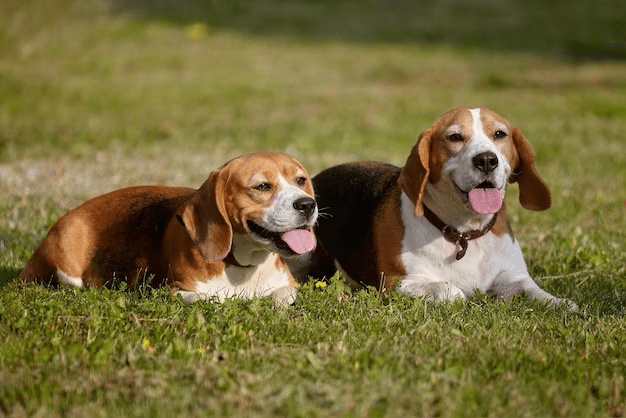
Beagles provide unique training challenges. Although these scent hounds are known for having an extraordinary sense of smell, they frequently get distracted by appealing smells, which makes it difficult to keep them focused during training. Because of their innate curiosity and willingness to follow their noses, they can be easily distracted and occasionally ignore instructions in favor of exploring intriguing smells.
In addition, Beagles have a reputation for being stubborn, which might show up as a disinterest in obeying commands. Due to their strong sense of self-determination and independent personality, individuals may decide to follow their agenda instead of following instructions from their trainers. You’ll need to be patient and use inventive techniques to get them to participate in training sessions to overcome their reluctance.
Incorporating scent-based activities into training sessions is a common strategy for effectively training Beagles. You can draw them in and concentrate their attention by using their excellent sense of smell to engage in tracking or scent games. Beagles can also be trained to cooperate and obey commands voluntarily by employing positive reinforcement techniques like praise and rewards.
Effective training of a Beagle requires an appreciation of and respect for its natural characteristics, such as curiosity and tenacity. Owners can achieve desired training outcomes and build a close bond with their Beagle companions by tailoring training methods to suit their individual qualities and being patient and consistent.
3. Dalmatian (hardest dogs to train)
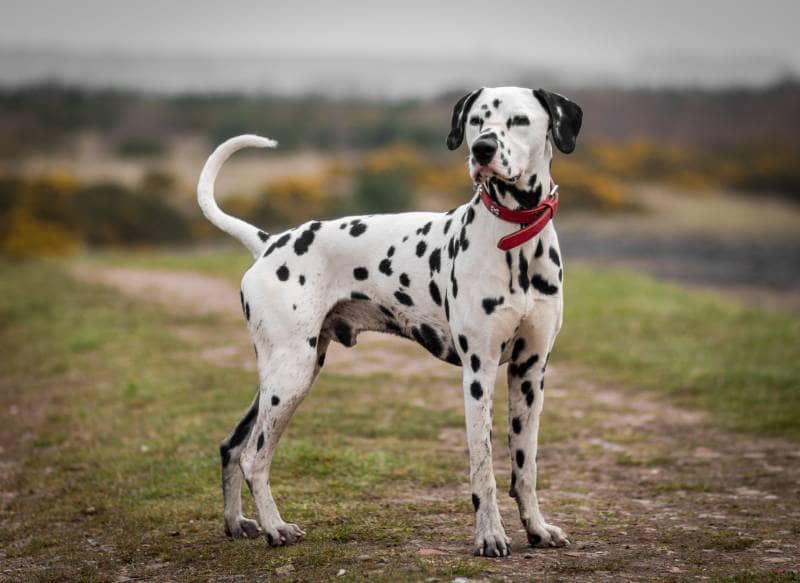
Dalmatians are famous for their unique white coats speckled with black or liver spots. Dalmand Dalmatian dogs are intelligent, active dogs. The Dalmatian breed’s modern demeanor reflects its original use as a carriage dog, demanding endurance and mental sharpness. Dalmatians are known for their extraordinary qualities, but they are also known for being stubborn and determined. Given this blend of independence and intellect, an owner must take a firm and persistent approach to training.
It is essential to begin training a Dalmatian at an early age to ensure success. Regular socializing and puppy training sessions assist in lessening their occasionally overly enthusiastic behavior and a tendency toward territorialism or guarding. Treats and praises are effective positive reinforcement tactics that help them overcome sporadic resistant spells. Dalmatians have a lot of energy; therefore, they need a lot of mental and physical engagement to keep them from getting bored and destructive. Running, agility sports, and advanced obedience training are good ways to use their energy. Unmanageable behavior could occur in a Dalmatian if proper direction and punishment are not given. They can, however, grow up to be devoted and affectionate family pets given the correct training and sufficient patience.
4. Chow Chow

Chow Chows’ distinctive blue-black tongue and lion-like mane make them one of the most identifiable breeds. They are said to have originated in China and were employed as temple guards there. They have mostly kept their historical traits, like being wary of outsiders and aggressively defending their owners’ belongings. Training a Chow Chow is difficult because of their independent personality and protective instinct. they are one from the hardest dogs to train.
Since Chow Chows are not usually as eager to please as some other breeds, conventional training techniques that focus on this trait may not be as successful. They need a trainer who respects their independence and is assertive enough to be a leader without being too strict. Chow Chow puppies must be socialized early to avoid aggressive tendencies from emerging; they must learn appropriate behavior with both people and other dogs from an early age.
When teaching this breed, consistency and patience are essential. When trying to motivate them, it’s important to utilize positive reinforcement sparingly because too much enthusiasm may be met with unyielding opposition. Chow Chows are intelligent animals that excel at activities and training that require them to solve problems. They never lose their feeling of individuality, though, and they have the freedom to follow instructions or not. Any potential owner should be aware of the dedication required to care for a breed that is so independent.
5. Afghan hound

Afghan Hounds are distinguished by their majestic appearance, enhanced by their eye-catching, silky coat and cool disposition. They were originally domesticated to hunt over difficult terrain in Afghanistan, and their independent spirit and muscular frame have always been essential to their character. Because of these same characteristics, they are rather distant and reticent, though, especially when it comes to training.
Afghan Hounds might be difficult to teach traditionally because they don’t often desire attention as much as other breeds do. Owners seeking a calm pet may find them annoying as they have their own agenda and don’t always obey commands. Therefore, rather than using harsh directives or negative reinforcement, Afghan Hound training methods should focus more on gentle persuasion and motivational strategies.
It takes patience to train an Afghan Hound. They react favorably to a gentle, caring approach that provides lots of encouragement for desired conduct. Harsh tactics are sensitive and may cause disinterest instead of compliance. Early socialization will help the dog become more confident and less of a natural recluse. By appealing to their hunting instincts and fostering a more welcoming training environment, engaging their brains through sports like hook coursing—a sport in which participants chase a mechanically driven lure. It can stimulate their minds and bodies. Afghan Hounds can be devoted, loving friends with a hint of their noble heritage if they are given the correct training.
Strategies for Training Challenging Breeds
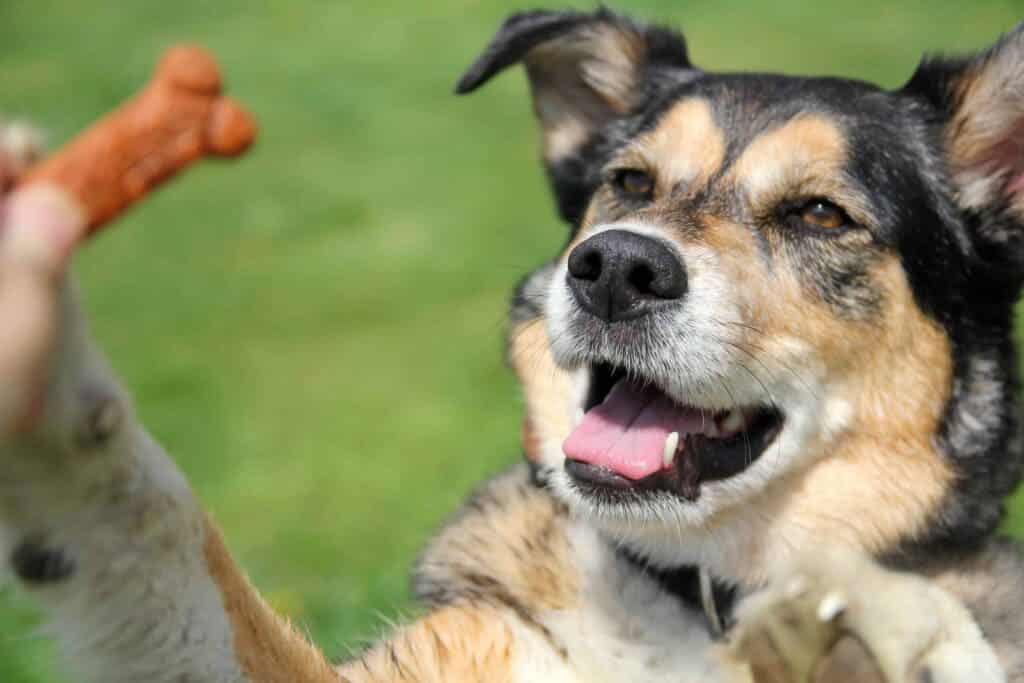
1. Get Started Young: Early Training and Socialization
Early socialization and training are advantageous for challenging breeds and crucial to responsible dog ownership. Early training helps create positive behaviors and lays the groundwork for a well-adjusted adult dog. Socialization helps your puppy grow up less scared and aggressive by exposing it to various people, places, sounds, and experiences. As soon as the puppy is brought home, training sessions should begin, with an emphasis on teaching fundamental commands like “sit,” “stay,” “come,” and “leave it.” These foundational teachings assist stop the emergence of unwanted behaviors and lay the groundwork for later, more sophisticated instruction.
2. Make Use of Encouragement (hardest dogs to train)
Positive reinforcement is typically well received by challenging breeds. By giving the dog a reward for positive behavior, this technique increases the possibility that the behavior will be repeated. Treats, compliments, or playtime can all be used as rewards based on what your dog responds to most. Treats may be the most effective way to reward a food-motivated dog, whereas a play-oriented dog would enjoy a quick game with a favorite toy. Making training gratifying and pleasurable for the dog and owner is crucial. In addition to helping with training, positive reinforcement also helps to improve the attachment between you and your pet.
3. Be patient and consistent
Teaching every dog requires persistence and patience, but teaching difficult breeds that might be stubborn and take longer to learn needs even more of these qualities. Every day should involve training, and instructions should always be delivered in the same manner. It will be easier to prevent confusion and strengthen learning if you consistently follow your command delivery and rule-setting with your dog. Keeping cool and patient is critical, especially when things move slowly. Even while it can take some dogs weeks or even months to understand a command, with perseverance thoroughly, they will ultimately pick it up.
4. Provide Lots of Exercise
Challenging breeds need a lot of exercise to keep fit and happy because they frequently have high energy levels. Numerous behavioral problems, including excessive barking, digging, and other damaging habits, can be caused by inactivity. Frequent physical activity helps to expend energy that could otherwise be used for such undesirable conduct. Long walks and runs, games like fetch and tug-of-war. And involvement in canine sports like agility or flyball are just a few examples of activities that can be done. Incorporating puzzle toys and training sessions into regular routines will help keep your dog cognitively activ. As mental exercise is equally important.
5. Seek Professional Help if Needed
It may be time to seek advice from a qualified dog trainer if you are having trouble controlling your dog’s behavior. A specialist can provide new insights and innovative tactics catered to your dog’s unique needs and temperament. They may give you regimented training sessions and assist you in comprehending the subtleties of successful dog training. Additionally, speaking with a canine behaviorist may be essential when behavioral problems are severe or deeply established. These specialists can assist in addressing behavioral issues that call for more specialized intervention, such as severe anxiety, anger, or other behavioral disorders.
Case Studies: Success Stories

Case studies of effective dog training can offer owners of difficult breeds priceless advice and motivation. Every narrative shows how specific tactics combined with persistence may lead to amazing accomplishments.
Luna, The Siberian husky
At first, Luna, a Siberian Husky, showed the typical tenacity of her breed. Still, her owner’s commitment to regular training and plenty of exercise paid off. Luna’s owner used positive reinforcement to reward her for being obedient, which encouraged her to concentrate during training. Exercises like scent work and agility training were added to further connect with her feelings. Training became enjoyable and fulfilling as a result of these activities. Which also kept her interested and allowed her to express her natural abilities and ambitions. Luna’s tale demonstrates how significant training overcomes can result from recognizing and utilizing a dog’s inherent characteristics.
Beagle: Max (
Max, a Beagle with a reputation for being stubborn, changed into a focused and submissive canine. Max’s owner cleverly used his innate tendency to follow scents to keep him focused during training sessions by introducing scent-based activities into the regimen. He was much more motivated and eager to participate in training when high-value treats were offered as rewards. By aligning training activities with Max’s innate attributes and interests. His owner successfully navigated the obstacles commonly associated with the distractibility and stubbornness of the breed.
Bella, a Dalmatian
Bella, a Dalmatian,(one of the hardest dogs to train) was a problem to her owner when she was a stubborn puppy. Her owner saw the value of a solid, healthy bond and committed to steady, frequent clicker training sessions. This technique assisted in rapidly identifying and rewarding the actions that her owner wished to see in her. Bella’s training was enhanced using positive reinforcement, which helped her connect obedience with benefits. Bella became an obedient and responsive friend with time, patience, and perseverance.
These successful tales emphasize how crucial adaptability, durability, and comprehension are when training dogs. They demonstrate that even dogs from difficult breeds can develop into well-mannered and beloved companions with the appropriate methods and dedication to regular work. Every example demonstrates how successful it is to address and utilize essential traits constructively by utilizing breed-specific solutions.
Conclusion
Training difficult breeds requires commitment, perseverance, and a sophisticated awareness of each dog’s needs and personality. Although the path may be challenging, the benefits of forging a close, trustworthy bond with a well-behaved dogs are priceless. Owners of difficult-to-train breeds might succeed in the training process by using techniques like positive reinforcement. Which strengthens the link between the dog and its owner while simultaneously encouraging good behavior.
Equally important is mental stimulation, which keeps the dog happy and involved and discourages the emergence of unwanted behaviors. Frequently resulting from boredom or dissatisfaction. Your dog’s mind may be kept engaged and sharp by consistently introducing new activities, toys, and training routines. Knowing when to seek professional assistance is essential to further overcome training obstacles. Expert behaviorists and trainers may offer priceless support and direction. As well as tailored training methods and insights unique to your dog’s requirements.
Ultimately, training these difficult breeds pays off in a fuller, more harmonious life spent with your dog. Dog owners can experience the deep happiness and devotedness of having a well-trained companion by appreciating their unique characteristics. Giving them regular structure, and taking care of their mental and physical needs.
Introduction:
Training pets is indeed an art form that requires commitment and skill. It is important to develop a solid relationship based on mutual respect and trust between humans and dogs, not merely teach them commands. Every dog breed has unique characteristics and tendencies that can significantly impact training. Certain breeds may react to commands with enthusiasm, while others may show signs of independence or in difference. There are some hardest dogs to train.
For training to be effective, it is essential to comprehend the unique qualities of each breed. For instance, hounds like Beagles may be quickly distracted by odors, whereas herding breeds like Border Collies may have a strong innate urge to chase. Furthermore, breeds like terriers with a high prey drive can need more time and patience.
A key component of successful training is frequently customizing methods to the dog’s and the owner’s unique requirements. Overcoming training obstacles requires a combination of positive reward, constancy, and clear communication. Furthermore, consulting with seasoned behaviorists or trainers can offer priceless support and understanding.
Dog owners can create a solid basis for a happy and peaceful connection with their canine friends by approaching training with empathy, patience, and a readiness to adjust.
lets explore the Professional Hunting Dog Training
Understanding Challenging Breeds

When it comes to obedience training, several dog breeds provide particular difficulties. Frequently, these difficulties result from characteristics carefully selected through generations for certain uses. Some breeds, like the Afghan Hound and the Siberian Husky, have a strong sense of independence because of their past as working dogs that had to make decisions on their own in the field. Similarly, terrier breeds developed for hunting, such as the Bull Terrier and the Jack Russell Terrier, were bred with a stubborn nature that might occasionally manifest itself during training.
In addition, high-energy breeds like Australian Shepherds and Border Collies need cerebral and physical stimulation to keep them interested in training activities. In training sessions, these breeds may become easily diverted or frustrated if they don’t have appropriate outlets for their energy.
Strong prey-driven dogs, such as Basenjis and Greyhounds, can also be prone to chasing small animals or objects, making it difficult for them to focus during training exercises, particularly in surroundings with many distractions.
Comprehending these traits unique to a particular breed is essential to customizing training regimens to meet the individual demands of every dog. Working with hard breeds requires patience, persistence, and positive reinforcement approaches to achieve training goals and foster a solid relationship between owner and dog.
Breeds That Present Challenges
1. Siberian Husky (hardest dogs to train)

Siberian Huskies present special training challenges because of their beauty and endearing nature. these siberian huskies are one from the hardest dogs to train. They are distinct from other breeds due to their independent spirit and strong will. Because they were historically bred as sled dogs, Siberian Huskies are used to making decisions while exploring wide, icy environments. This independence may manifest as resistance to following instructions, mainly if they sense something more alluring in their environment.
Training sessions may also be challenging because of their natural curiosity to travel and explore. Siberian Huskies are prone to being quickly diverted by sights or smells, which makes them disobey commands in favor of exploring their surroundings. Their owners must be patient and persistent with them because of their inclination to trust their gut feelings above human guidance.
Keeping Siberian Huskies mentally and physically stimulated is a common practical training component. They can channel their enthusiasm and avoid boredom by participating in activities like agility training or scent work, which will increase their receptiveness to training. Additionally, Siberian Huskies can be trained to focus and obey directions more readily by employing positive reinforcement tactics like praise or food.
The secret to effective training is recognizing and honoring the Siberian Husky’s innate instincts and disposition. Owners can successfully negotiate this exceptional hardest dogs to train particular hurdles if they have patience, consistency, and a strong friendship based on mutual respect and trust.
2. Beagle:

Beagles provide unique training challenges. Although these scent hounds are known for having an extraordinary sense of smell, they frequently get distracted by appealing smells, which makes it difficult to keep them focused during training. Because of their innate curiosity and willingness to follow their noses, they can be easily distracted and occasionally ignore instructions in favor of exploring intriguing smells.
In addition, Beagles have a reputation for being stubborn, which might show up as a disinterest in obeying commands. Due to their strong sense of self-determination and independent personality, individuals may decide to follow their agenda instead of following instructions from their trainers. You’ll need to be patient and use inventive techniques to get them to participate in training sessions to overcome their reluctance.
Incorporating scent-based activities into training sessions is a common strategy for effectively training Beagles. You can draw them in and concentrate their attention by using their excellent sense of smell to engage in tracking or scent games. Beagles can also be trained to cooperate and obey commands voluntarily by employing positive reinforcement techniques like praise and rewards.
Effective training of a Beagle requires an appreciation of and respect for its natural characteristics, such as curiosity and tenacity. Owners can achieve desired training outcomes and build a close bond with their Beagle companions by tailoring training methods to suit their individual qualities and being patient and consistent.
3. Dalmatian (hardest dogs to train)

Dalmatians are famous for their unique white coats speckled with black or liver spots. Dalmand Dalmatian dogs are intelligent, active dogs. The Dalmatian breed’s modern demeanor reflects its original use as a carriage dog, demanding endurance and mental sharpness. Dalmatians are known for their extraordinary qualities, but they are also known for being stubborn and determined. Given this blend of independence and intellect, an owner must take a firm and persistent approach to training.
It is essential to begin training a Dalmatian at an early age to ensure success. Regular socializing and puppy training sessions assist in lessening their occasionally overly enthusiastic behavior and a tendency toward territorialism or guarding. Treats and praises are effective positive reinforcement tactics that help them overcome sporadic resistant spells. Dalmatians have a lot of energy; therefore, they need a lot of mental and physical engagement to keep them from getting bored and destructive. Running, agility sports, and advanced obedience training are good ways to use their energy. Unmanageable behavior could occur in a Dalmatian if proper direction and punishment are not given. They can, however, grow up to be devoted and affectionate family pets given the correct training and sufficient patience.
4. Chow Chow

Chow Chows’ distinctive blue-black tongue and lion-like mane make them one of the most identifiable breeds. They are said to have originated in China and were employed as temple guards there. They have mostly kept their historical traits, like being wary of outsiders and aggressively defending their owners’ belongings. Training a Chow Chow is difficult because of their independent personality and protective instinct. they are one from the hardest dogs to train.
Since Chow Chows are not usually as eager to please as some other breeds, conventional training techniques that focus on this trait may not be as successful. They need a trainer who respects their independence and is assertive enough to be a leader without being too strict. Chow Chow puppies must be socialized early to avoid aggressive tendencies from emerging; they must learn appropriate behavior with both people and other dogs from an early age.
When teaching this breed, consistency and patience are essential. When trying to motivate them, it’s important to utilize positive reinforcement sparingly because too much enthusiasm may be met with unyielding opposition. Chow Chows are intelligent animals that excel at activities and training that require them to solve problems. They never lose their feeling of individuality, though, and they have the freedom to follow instructions or not. Any potential owner should be aware of the dedication required to care for a breed that is so independent.
5. Afghan hound

Afghan Hounds are distinguished by their majestic appearance, enhanced by their eye-catching, silky coat and cool disposition. They were originally domesticated to hunt over difficult terrain in Afghanistan, and their independent spirit and muscular frame have always been essential to their character. Because of these same characteristics, they are rather distant and reticent, though, especially when it comes to training.
Afghan Hounds might be difficult to teach traditionally because they don’t often desire attention as much as other breeds do. Owners seeking a calm pet may find them annoying as they have their own agenda and don’t always obey commands. Therefore, rather than using harsh directives or negative reinforcement, Afghan Hound training methods should focus more on gentle persuasion and motivational strategies.
It takes patience to train an Afghan Hound. They react favorably to a gentle, caring approach that provides lots of encouragement for desired conduct. Harsh tactics are sensitive and may cause disinterest instead of compliance. Early socialization will help the dog become more confident and less of a natural recluse. By appealing to their hunting instincts and fostering a more welcoming training environment, engaging their brains through sports like hook coursing—a sport in which participants chase a mechanically driven lure. It can stimulate their minds and bodies. Afghan Hounds can be devoted, loving friends with a hint of their noble heritage if they are given the correct training.
Strategies for Training Challenging Breeds

1. Get Started Young: Early Training and Socialization
Early socialization and training are advantageous for challenging breeds and crucial to responsible dog ownership. Early training helps create positive behaviors and lays the groundwork for a well-adjusted adult dog. Socialization helps your puppy grow up less scared and aggressive by exposing it to various people, places, sounds, and experiences. As soon as the puppy is brought home, training sessions should begin, with an emphasis on teaching fundamental commands like “sit,” “stay,” “come,” and “leave it.” These foundational teachings assist stop the emergence of unwanted behaviors and lay the groundwork for later, more sophisticated instruction.
2. Make Use of Encouragement (hardest dogs to train)
Positive reinforcement is typically well received by challenging breeds. By giving the dog a reward for positive behavior, this technique increases the possibility that the behavior will be repeated. Treats, compliments, or playtime can all be used as rewards based on what your dog responds to most. Treats may be the most effective way to reward a food-motivated dog, whereas a play-oriented dog would enjoy a quick game with a favorite toy. Making training gratifying and pleasurable for the dog and owner is crucial. In addition to helping with training, positive reinforcement also helps to improve the attachment between you and your pet.
3. Be patient and consistent
Teaching every dog requires persistence and patience, but teaching difficult breeds that might be stubborn and take longer to learn needs even more of these qualities. Every day should involve training, and instructions should always be delivered in the same manner. It will be easier to prevent confusion and strengthen learning if you consistently follow your command delivery and rule-setting with your dog. Keeping cool and patient is critical, especially when things move slowly. Even while it can take some dogs weeks or even months to understand a command, with perseverance thoroughly, they will ultimately pick it up.
4. Provide Lots of Exercise
Challenging breeds need a lot of exercise to keep fit and happy because they frequently have high energy levels. Numerous behavioral problems, including excessive barking, digging, and other damaging habits, can be caused by inactivity. Frequent physical activity helps to expend energy that could otherwise be used for such undesirable conduct. Long walks and runs, games like fetch and tug-of-war. And involvement in canine sports like agility or flyball are just a few examples of activities that can be done. Incorporating puzzle toys and training sessions into regular routines will help keep your dog cognitively activ. As mental exercise is equally important.
5. Seek Professional Help if Needed
It may be time to seek advice from a qualified dog trainer if you are having trouble controlling your dog’s behavior. A specialist can provide new insights and innovative tactics catered to your dog’s unique needs and temperament. They may give you regimented training sessions and assist you in comprehending the subtleties of successful dog training. Additionally, speaking with a canine behaviorist may be essential when behavioral problems are severe or deeply established. These specialists can assist in addressing behavioral issues that call for more specialized intervention, such as severe anxiety, anger, or other behavioral disorders.
Case Studies: Success Stories

Case studies of effective dog training can offer owners of difficult breeds priceless advice and motivation. Every narrative shows how specific tactics combined with persistence may lead to amazing accomplishments.
Luna, The Siberian husky
At first, Luna, a Siberian Husky, showed the typical tenacity of her breed. Still, her owner’s commitment to regular training and plenty of exercise paid off. Luna’s owner used positive reinforcement to reward her for being obedient, which encouraged her to concentrate during training. Exercises like scent work and agility training were added to further connect with her feelings. Training became enjoyable and fulfilling as a result of these activities. Which also kept her interested and allowed her to express her natural abilities and ambitions. Luna’s tale demonstrates how significant training overcomes can result from recognizing and utilizing a dog’s inherent characteristics.
Beagle: Max (
Max, a Beagle with a reputation for being stubborn, changed into a focused and submissive canine. Max’s owner cleverly used his innate tendency to follow scents to keep him focused during training sessions by introducing scent-based activities into the regimen. He was much more motivated and eager to participate in training when high-value treats were offered as rewards. By aligning training activities with Max’s innate attributes and interests. His owner successfully navigated the obstacles commonly associated with the distractibility and stubbornness of the breed.
Bella, a Dalmatian
Bella, a Dalmatian,(one of the hardest dogs to train) was a problem to her owner when she was a stubborn puppy. Her owner saw the value of a solid, healthy bond and committed to steady, frequent clicker training sessions. This technique assisted in rapidly identifying and rewarding the actions that her owner wished to see in her. Bella’s training was enhanced using positive reinforcement, which helped her connect obedience with benefits. Bella became an obedient and responsive friend with time, patience, and perseverance.
These successful tales emphasize how crucial adaptability, durability, and comprehension are when training dogs. They demonstrate that even dogs from difficult breeds can develop into well-mannered and beloved companions with the appropriate methods and dedication to regular work. Every example demonstrates how successful it is to address and utilize essential traits constructively by utilizing breed-specific solutions.
Conclusion
Training difficult breeds requires commitment, perseverance, and a sophisticated awareness of each dog’s needs and personality. Although the path may be challenging, the benefits of forging a close, trustworthy bond with a well-behaved dogs are priceless. Owners of difficult-to-train breeds might succeed in the training process by using techniques like positive reinforcement. Which strengthens the link between the dog and its owner while simultaneously encouraging good behavior.
Equally important is mental stimulation, which keeps the dog happy and involved and discourages the emergence of unwanted behaviors. Frequently resulting from boredom or dissatisfaction. Your dog’s mind may be kept engaged and sharp by consistently introducing new activities, toys, and training routines. Knowing when to seek professional assistance is essential to further overcome training obstacles. Expert behaviorists and trainers may offer priceless support and direction. As well as tailored training methods and insights unique to your dog’s requirements.
Ultimately, training these difficult breeds pays off in a fuller, more harmonious life spent with your dog. Dog owners can experience the deep happiness and devotedness of having a well-trained companion by appreciating their unique characteristics. Giving them regular structure, and taking care of their mental and physical needs.

